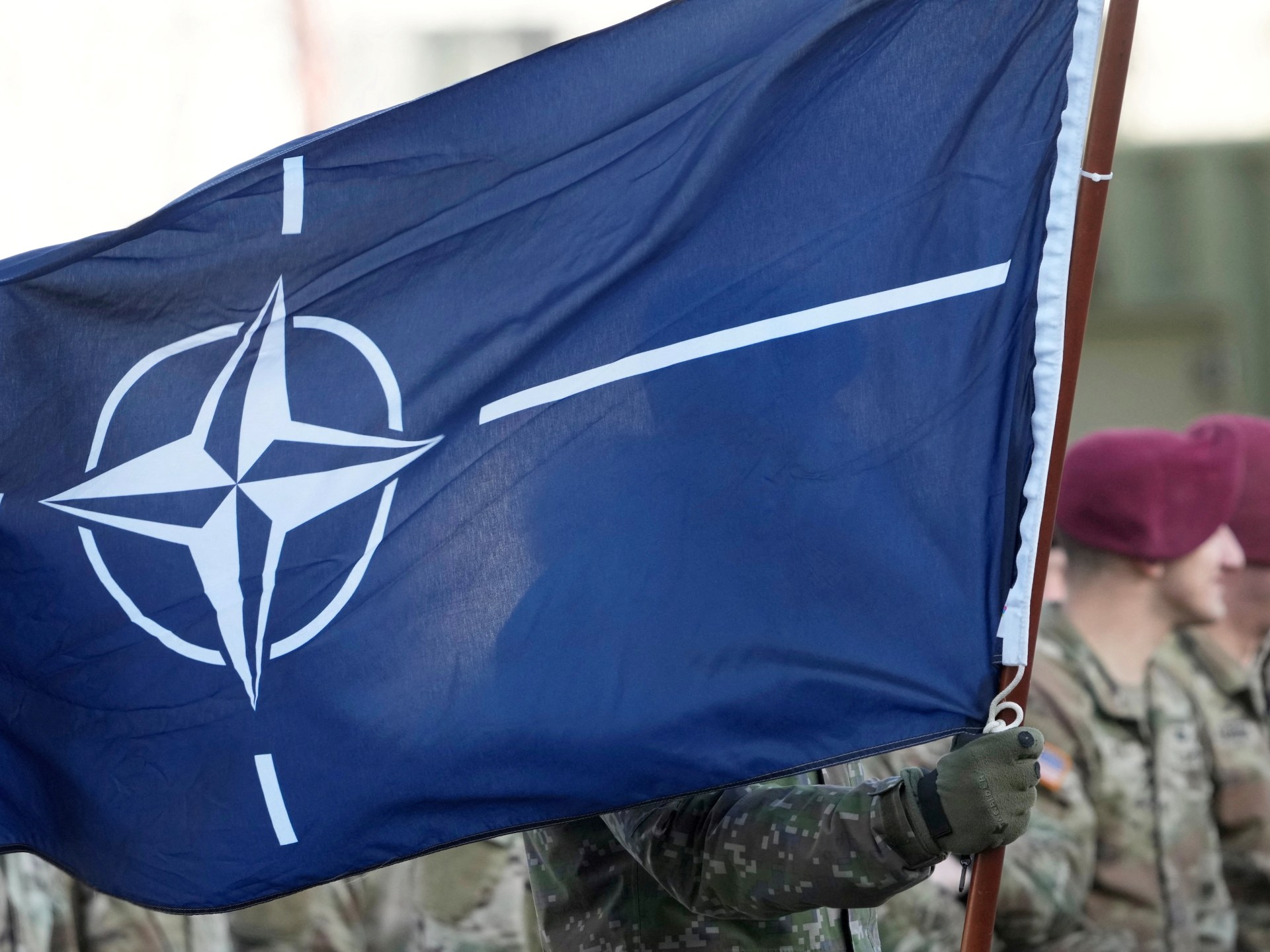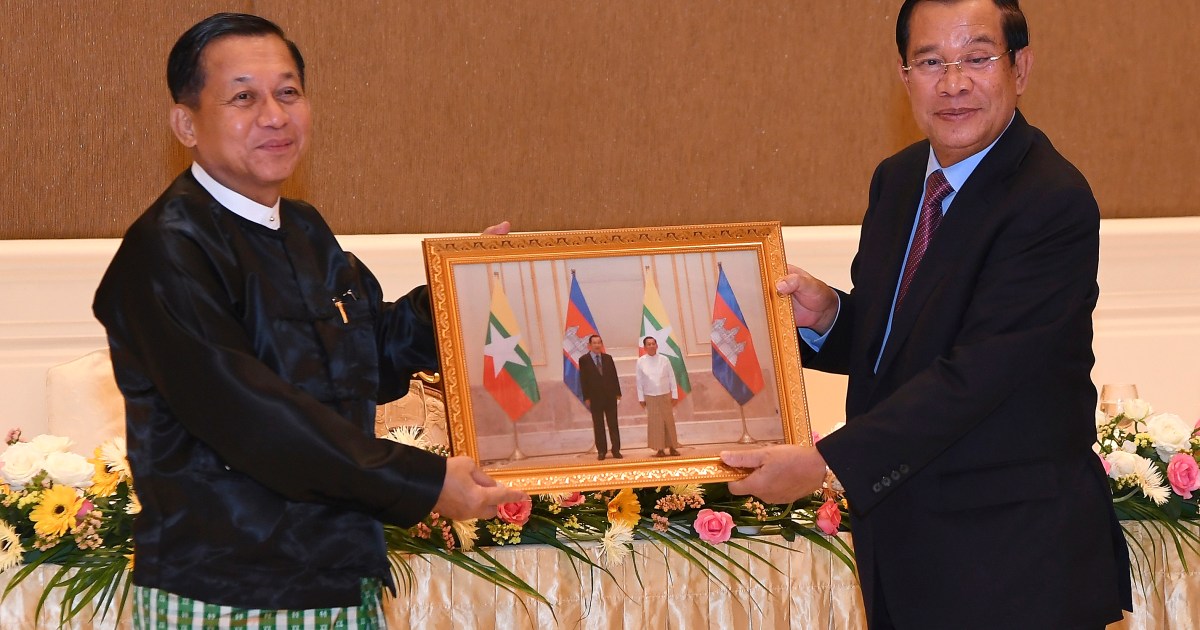NATO’s articles 4 and 5: The path to collective defence | Explainer News
The United States and its allies in the North Atlantic Treaty Organization (NATO) are investigating a blast that killed two people in Poland’s Przewodow, a village in the eastern part of the country near the border with Ukraine.
Polish authorities have blamed a “Russian-made” missile for the deaths on Tuesday in a village about 6 kilometres (4 miles) from the border with Ukraine.
Russia’s defence ministry has denied that any Russian missiles hit Polish territory, describing such reports as “a deliberate provocation aimed at escalating the situation”.
If confirmed that the missile was fired by Russia, it would be the first time since its invasion of Ukraine in February that one of Moscow’s weapons has struck and inflicted casualties in a NATO country.
A possible Russian missile strike poses serious concerns as the foundation of the 30-member NATO alliance is the principle that an attack against one member is an attack on all.
While the Polish foreign ministry identified the missile as being made in Russia, Poland’s President Andrzej Duda has been more cautious regarding its origin, saying that officials did not know for sure who fired it or where it was made.
US President Joe Biden also said that the missile – based on trajectory – was unlikely to have been fired by Russia, adding however, “but we’ll see”.
As a NATO member, Poland has said it was verifying whether it needed to request consultations under Article 4 of the alliance.
Experts note that Article 4 must be invoked before the process begins that could, potentially, lead to the invocation of Article 5 – which enshrines NATO’s principle of collective defence.
So, what are NATO’s Article 4 and Article 5 and how do they work?
What is Article 4?
Article 4 can be invoked when any NATO member feels threatened.
Invoking Article 4 beings a process which leads to consultation between the member country (or countries) with NATO’s most senior decision-making body, the North Atlantic Council, or NAC, says John R Deni, a research professor at the US Army War College and lecturer at American University.
Meetings of the NAC are not unusual and take place regularly to discuss day-to-day issues related to the alliance, Deni told The Conversation.
However, when Article 4 is formally triggered by an alliance member, the NAC prioritises the consultation with the country concerned and their issue will be addressed immediately.
Invoking Article 4 is a step on the path to a NATO response should the NAC consultation deem there are grounds to move forward based on the issue brought to its attention by the member state.
Triggering Article 4
Article 4 can be triggered when a member or members believe that their “territorial integrity, political independence or security” is threatened.
“Any member country can formally invoke Article 4 of the North Atlantic Treaty. As soon as it is invoked, the issue is discussed and can potentially lead to some form of joint decision or action on behalf of the Alliance,” NATO says.
“Whatever the scenario, fellow members sitting around the Council table are encouraged to react to a situation brought to their attention by a member country,” the organisation says.
Article 4 has been invoked only on seven occasions during the lifespan of NATO, which was established in 1949.
Most recently, Article 4 was invoked in March by eight NATO countries – Bulgaria, Czechia, Estonia, Latvia, Lithuania, Poland, Romania and Slovakia – following Russia’s invasion of Ukraine on February 24.
Turkey invoked Article 4 in 2015 and twice in 2012, the first when in June that year one of its fighter jets was shot down by Syrian air defence. In October 2012, it invoked Article 4 when three Turkish citizens were killed by Syrian shelling amid the continuing civil war in its neighbouring country.
Turkey requested in the Article 4 consultation process that NATO deploy Patriot missiles as a defence system, which the organisation agreed to in the interests of protecting Turkish people and territory.
As Deni says, the Article 4 consultation and the decisions that might emerge are “a big deal – just not as weighty as invoking Article 5”.
Article 4 is a preparatory phase prior to Article 5, which is the alliance’s commitment to collective defence.
NATO’S ‘cornerstone’ Article 5
Described as the “cornerstone” of the military alliance, NATO’s collective defence principle – contained in Article 5 – was developed to create a mutual protective pact in order to counter risks posed by the Soviet Union, particularly in Eastern Europe, following World War II and the emergence of the Cold War.
Committing to Article 5 means that each NATO member knows that if one of the alliance is the “victim of an armed attack, each and every other member of the Alliance will consider this act of violence as an armed attack against all members”, NATO states.
That means that each NATO member is obligated to “take the actions it deems necessary to assist the Ally attacked”.
When Article 5 is invoked, NATO allies are free to provide whatever form of aid and assistance is deemed “necessary to respond to the situation”.
Determining what is necessary to respond to a given situation is the individual obligation of each NATO ally, and may not necessarily use military power.
As NATO states: “It is therefore left to the judgment of each individual member country to determine how it will contribute.”
Each country consults with all other alliance members in terms of response and with the ultimate aim “to restore and maintain the security” of alliance members.
First use of Article 5
Article 5 was invoked for the first time ever following the September 11, 2001 attacks on the US by al-Qaeda.
The triggering of Article 5 saw “NATO engage actively in the fight against terrorism, launch its first operations outside the Euro-Atlantic area and begin a far-reaching transformation of its capabilities”, according to the alliance.
“By invoking Article 5, NATO members showed their solidarity toward the United States and condemned, in the strongest possible way, the terrorist attacks against the United States.”
Could the missile strike on Poland trigger Article 5?
Deni of the American University said that it was difficult to assess currently whether the apparent missile strike could trigger Article 5 as the details of what occurred in the Polish village are not yet fully known, and “there are lots of variables at play”.
Was the missile strike accidental or deliberate? Was Russia actually to blame?
“It makes a massive difference whether this was a targeted attack on Polish military or civilian sites, or whether it was stray missiles,” Deni told The Conversation.
“There is also the possibility that this was debris from a strike in Ukraine,” he said.
“The loss of any innocent lives is tragic in any case, but I think the number of deaths resulting from the strike will also be a factor in whether Poland requests invocation of Article 5,” he added.





Pingback: buy magic mushrooms near me
Pingback: briansclub cm
Pingback: power wheels